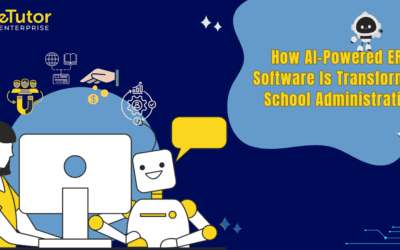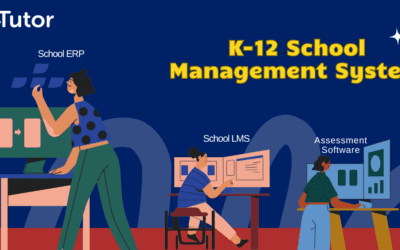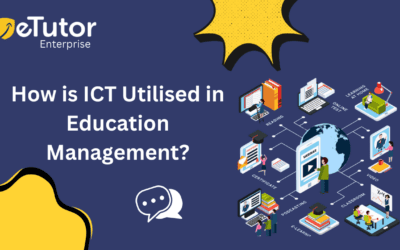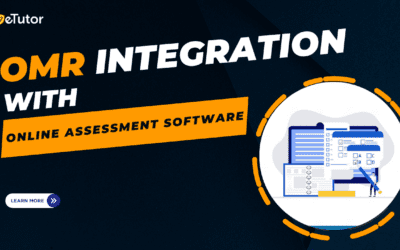Exploring the Transformative Power of Education Software

Technology has emerged as a significant facilitator for change in the continually changing world of education. Education software, with its varied set of tools and capabilities, has transformed the way students learn and teachers educate. We will explore into the realm of education software in this blog, looking at its numerous varieties, benefits, implementation issues, and future trends.
Table of Contents
ToggleTypes of Education Software
Learning Management Systems (LMS):
Learning Management Systems have evolved into the foundation of digital education. Teachers may manage, deliver, and track instructional content and activities using these platforms’ centralized hubs.
LMS platforms streamline educational practices, increase student engagement, and encourage personalized learning experiences by organizing course materials, facilitating communication, and facilitating assessments.
Learn More about Learning Management Consultant:
Educational Apps and Mobile Learning:
Learning has moved outside the traditional classroom walls thanks to educational apps. These apps cover a wide range of courses and abilities, with interactive and entertaining content.
Students may now access educational resources whenever and wherever they want thanks to the rise of mobile learning, which has transformed smartphones and tablets into formidable instructional tools.
Assessment and Grading Software:
Assessment and grading software streamlines the evaluation process for teachers while giving students with vital input.
These systems provide capabilities such as automated grading, customizable exams, and data analysis, allowing educators to properly and efficiently measure student development.
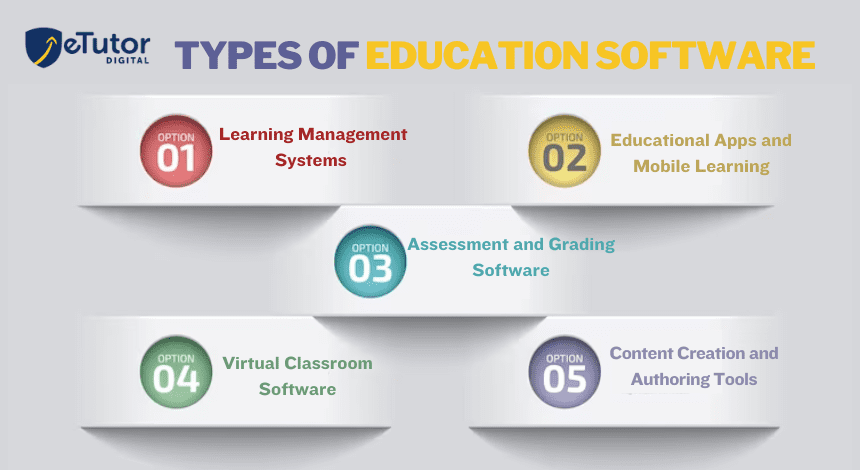
Virtual Classroom Software:
By building immersive online learning environments, virtual classroom software supports remote and distance learning.
Virtual classrooms seamlessly connect teachers and students with features such as video conferencing, chat functionality, and collaborative tools, enabling interactive and engaging learning experiences.
Content Creation and Authoring Tools:
Educators can use content development and authoring technologies to create compelling instructional materials.
These tools, which range from multimedia creation software to interactive presentation platforms, enable teachers to generate dynamic content that appeals to a variety of learning styles.
Benefits of Education Software
Enhanced Engagement and Interactivity:
By adding interactive components such as multimedia, simulations, and gamification, education software promotes active learning.
These elements capture students’ attention, enabling better learning and long-term information retention.
Personalized Learning Experiences:
Personalized learning becomes a reality with education software. Adaptive learning technologies analyze students’ performance and provide personalized recommendations and resources, assuring individualized instruction and satisfying a wide range of learning demands.
Improved Collaboration and Communication:
Education software enables seamless collaboration among students and teachers across geographical boundaries.
Communication tools, discussion boards, and shared workspaces encourage students to actively participate and share ideas, which promotes collaborative learning.
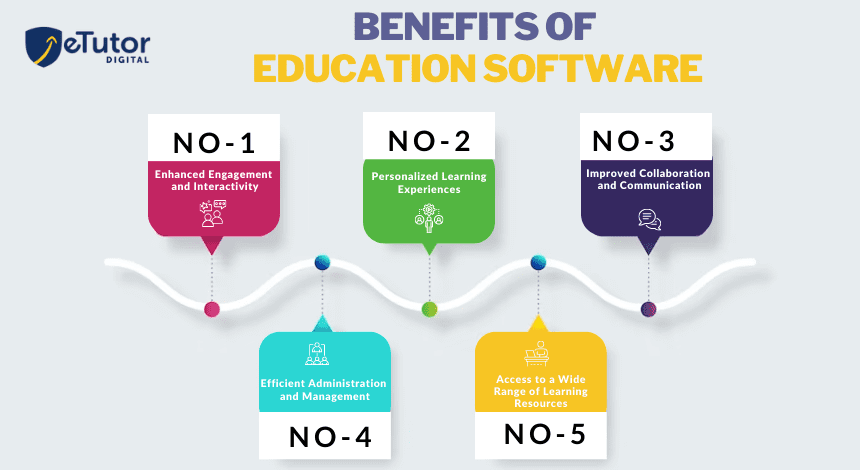
Efficient Administration and Management:
Education software reduces administrative chores such as attendance tracking, scheduling, and record-keeping, freeing up crucial time for educators.
Schools can make data-driven decisions thanks to centralized data management and analytics, which improves efficiency and resource allocation.
Access to a Wide Range of Learning Resources:
Access to huge reservoirs of instructional content, such as e-books, films, online libraries, and interactive learning modules, is provided via education software.
This variety of resources extends learning opportunities beyond standard textbooks, allowing students to investigate a wide range of topics and viewpoints.
Challenges and Considerations in Implementing Education Software
Implementing education software presents a number of problems that institutions must address:
Technical Requirements and Infrastructure:
Adequate infrastructure, dependable internet access, and appropriate devices are required for the smooth implementation and use of educational software.
Training and Support for Teachers and Students:
Proper training and continuing support for instructors and students are critical to ensuring that education software is used effectively. Professional development programs and easily accessible user guides can help increase software adoption and integration.
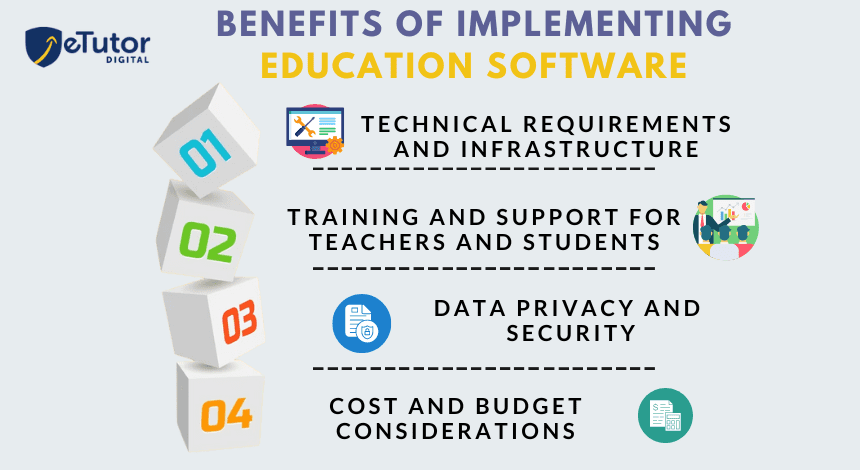
Data Privacy and Security:
Data privacy and security must be prioritized by educational institutions. Compliance with data protection rules, encryption measures, and robust authentication methods should all be in place to protect sensitive student and instructor information.
Cost and Budget Considerations:
The cost of educational software and associated hardware should be budgeted for. Institutions must evaluate the long-term benefits and ROI of their software systems.
Advantages of Educational Software
Artificial Intelligence and Machine Learning in Education:
AI and machine learning algorithms improve the whole educational experience by providing personalized learning routes, intelligent tutoring systems, and automated evaluation tools.
Gamification and Virtual Reality:
Gamification techniques and virtual reality simulations make learning more engaging, immersive, and interactive, bringing complicated concepts to life and encouraging active involvement.
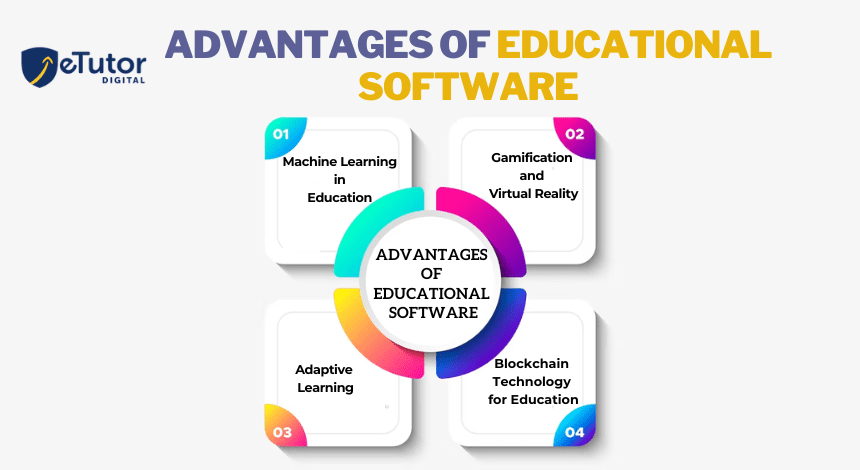
Adaptive Learning and Personalization:
Advances in adaptive learning technologies will allow for increasingly more personalized learning experiences that suit to individual strengths, weaknesses, and learning preferences.
Blockchain Technology for Credentialing and Certification:
Blockchain-based systems offer secure and tamper-proof certification processes, allowing students to have verifiable digital credentials and ensuring integrity and transparency in the certification process.
Conclusion:
Education software has usher in a new era of learning, converting traditional classroom instruction into dynamic, engaging, and personalized experiences. The options are infinite, from learning management systems to instructional apps and virtual classrooms.
Educational institutions may unlock the full potential of their students and prepare them for success in a digital and linked world by adopting and exploiting education software. Let us embrace the digital revolution and empower education’s future.
1) What is education software?
Education software is a subset of software developed to improve teaching, learning, and administrative procedures in educational institutions.These technologies include content management, assessments, collaboration, and communication features that are suited to the specific needs of instructors and students.
2) How can education software benefit students?
Students can reap several benefits from educational software. It encourages active and engaged learning through interactive material, personalized learning experiences, access to a wide range of resources, and chances for collaboration and contact with peers and educators.
3) What are the advantages of using learning management systems (LMS)?
Learning management systems (LMS) help to improve educational practices by offering centralized platforms for organizing, distributing, and tracking educational content and activities. LMS solutions provide advantages such as organized course materials, quick assessment and grading, improved cooperation and communication, and analytics for tracking student progress.
4) Can education software be customized to suit specific educational needs?
Yes, many education software systems enable for customization to meet the unique demands and objectives of educational institutions. Educational software frequently provides flexibility and adaptability to respond to varied teaching and learning styles, from content development to assessment methods.
5) Are there education software options available for remote and online learning?
Absolutely! With the advent of remote and online learning, there is a wide range of education software solutions available to support virtual classrooms, remote assessments, content distribution, and interactive participation. These tools aid in bridging the physical divide and creating immersive online learning experiences.
6) How can education software help educators in their teaching practices?
Education software assists educators in a variety of ways. It aids in the organization of course materials, the creation of interactive and engaging content, the delivery of personalized instruction, the automation of assessments and grading, the enhancement of collaboration and communication, and the provision of data-driven insights for effective teaching practices.
7) What should educational institutions consider when implementing education software?
Consider factors such as software compatibility with existing systems, technical requirements and infrastructure, teacher and student training and support, data privacy and security measures, and the long-term cost and budget implications of implementing and maintaining the software.
8) Are there education software options for administrative tasks in schools?
Yes, educational software solutions for administrative chores are accessible. These software tools aid in tasks such as attendance tracking, scheduling, record-keeping, and data administration, simplifying administrative operations and increasing overall efficiency in educational institutions.
9) How can education software contribute to student assessment and progress tracking?
Educators can use education software to construct and conduct exams, track student progress, generate detailed reports, and provide timely feedback. This aids in the monitoring of individual student performance, the identification of areas for development, and the customizing of instruction accordingly.
10) What are some future trends in education software?
The integration of artificial intelligence (AI) and machine learning for personalized learning, gamification and virtual reality for immersive experiences, adaptive learning technologies for individualized instruction, and the use of blockchain for secure credentialing and certification are among the future trends in education software.
Recent Posts
- How School ERP Software Maximizes Productivity and Minimizes Cost
- How Does ERP Software for Schools Help Educators?
- Why Educational Institutions Need Online Exam Software in 2025
- How Is AI-Based ERP Software Transforming School Administration?
- Latest IIT-JEE & NEET Exam Trends 2025 | Key Changes in JEE, NEET 2025 Exams By NTA


